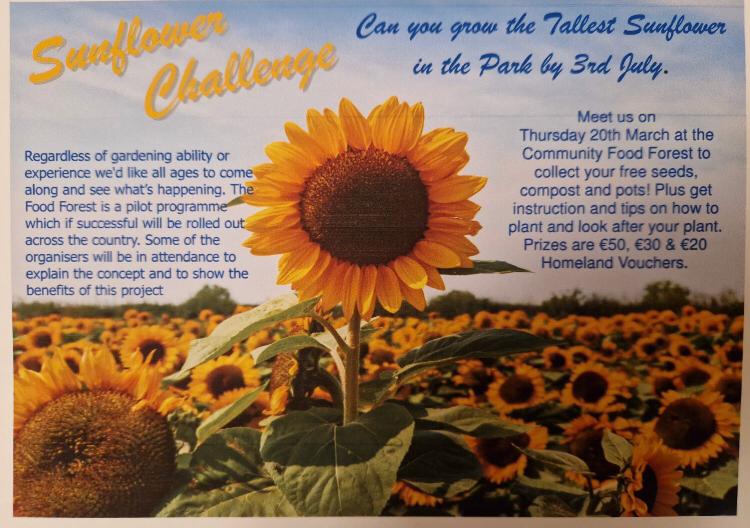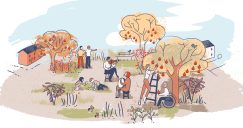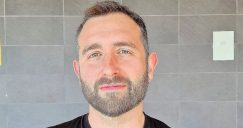Biodiversity in Westport
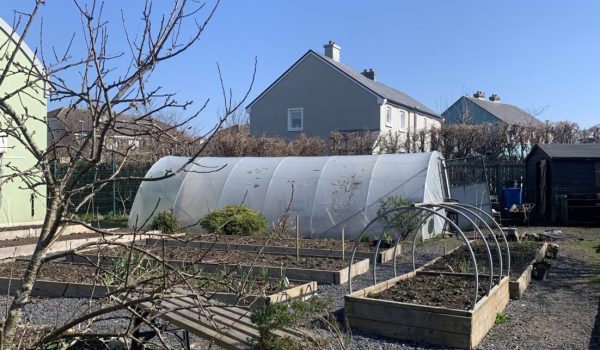
- Article, Ireland
Future Food Forests is an initiative in Westport, Co. Mayo that promotes a thriving wellbeing economy, nourished by local, healthy and sustainable food systems. As part of this initiative, a local community group are creating their own food forest.
Biodiversity Workshop
On Wednesday 19th March, 51 adult and school learners in Westport took part in a Biodiversity Workshop with Mayo County Council’s Biodiversity Officer Sheila Murphy, and Westport Tidy Town’s Biodiversity Officer Pat Fahy. The sun was shining in the community garden whilst participants learned about local biodiversity.
The first stop of the day was a visit to the Food Forest at Father Angelus Park where Tidy Town’s volunteer Paddy recently built some raised beds (pictured right). These beds are now being used by local businesses to deposit coffee grounds and by locals around Father Angelus Park for food waste to start the composting process. These raised beds will home carrots and beetroot.
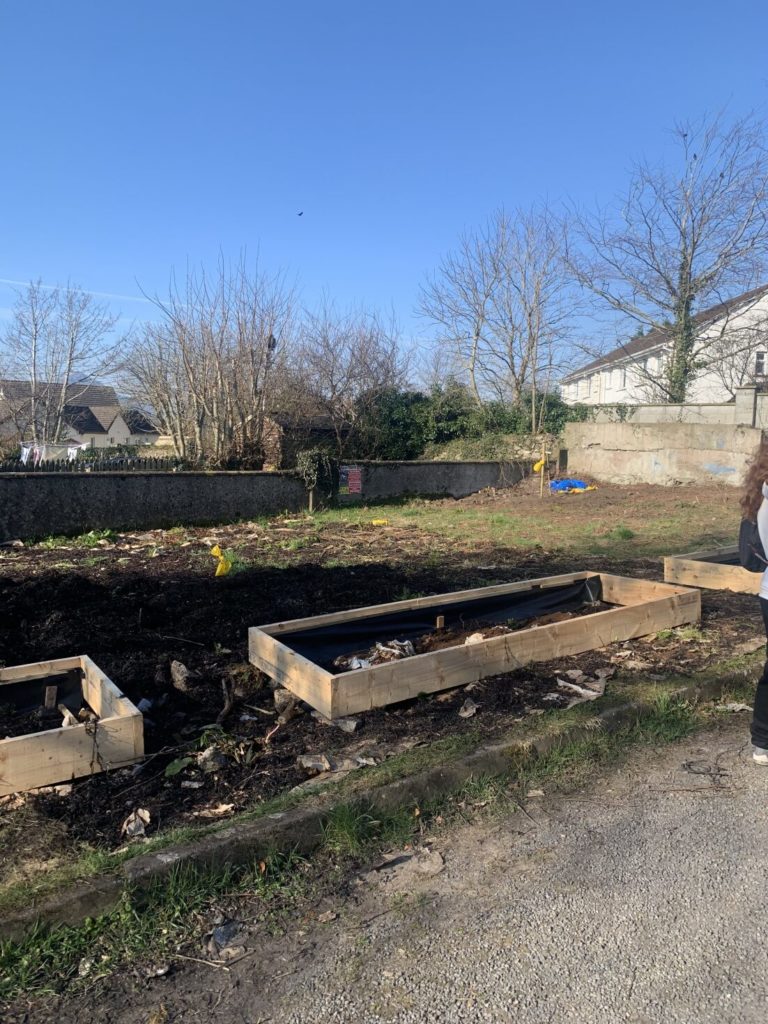
Raised beds at Father Angelus Park, Westport, Co. Mayo
The boys school opposite Father Angelus Park, Rice College TY students and Mayo College horticulture students were introduced to the Food Forest by Pat Fahy who has been organising weekly planting sessions on Saturday mornings. Pat has worked on a blueprint for the food forest taking residents requests for apple trees and sunflowers. The group were also introduced to the concept of a food forest by Caithriona McCarthy, horticulture teacher and founder of Edible Landscape Project. Food forests provide food for people nearby and require minimum upkeep once they have been established. This increases their food resilience, crucial as the climate crisis increases the instances of storms and other factors affecting food security. Food forests also have benefits for biodiversity and can provide spaces for communities to get together.
There is now a great amount of wood chip to use in the food forest for walkways and ground cover after recent storm Eowyn caused significant tree fall around Ireland. The council chipped the trees that fell around Father Angelus Park leaving the residents with the chips, pictured below.
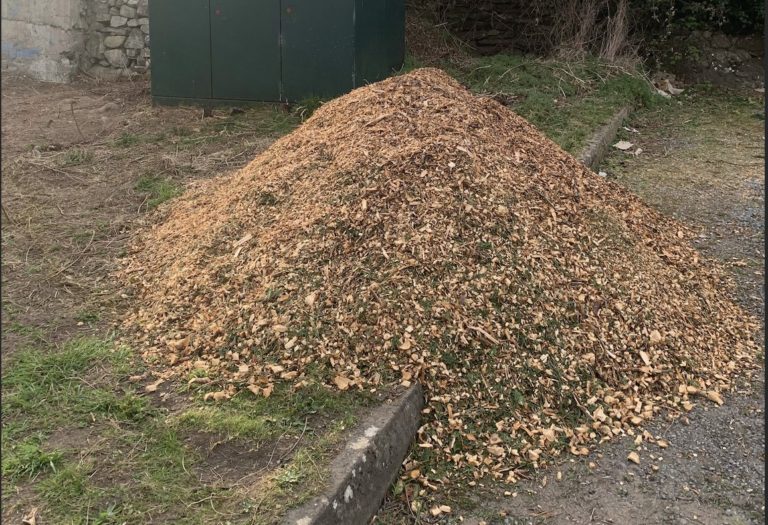
Wood chip at Father Angelus Park
The second part of the day took place at the Quay Community Centre, where there is an existing community garden. Another class of horticulture students joined, and the Green Schools Team from Sacred Heart School. Sheila Murphy introduced the groups to local biodiversity in Ireland, and Mayo specifically. She also showed the learners different kinds of bat boxes. These are used to provide resting and roosting places for bats. There are 9 species of bats in Ireland, when asked if anyone has ever seen one here one student from Sacred Heart said “one flew into my window once!” Sheila also played a tree guessing game asking learners to identify the trees in the community garden.
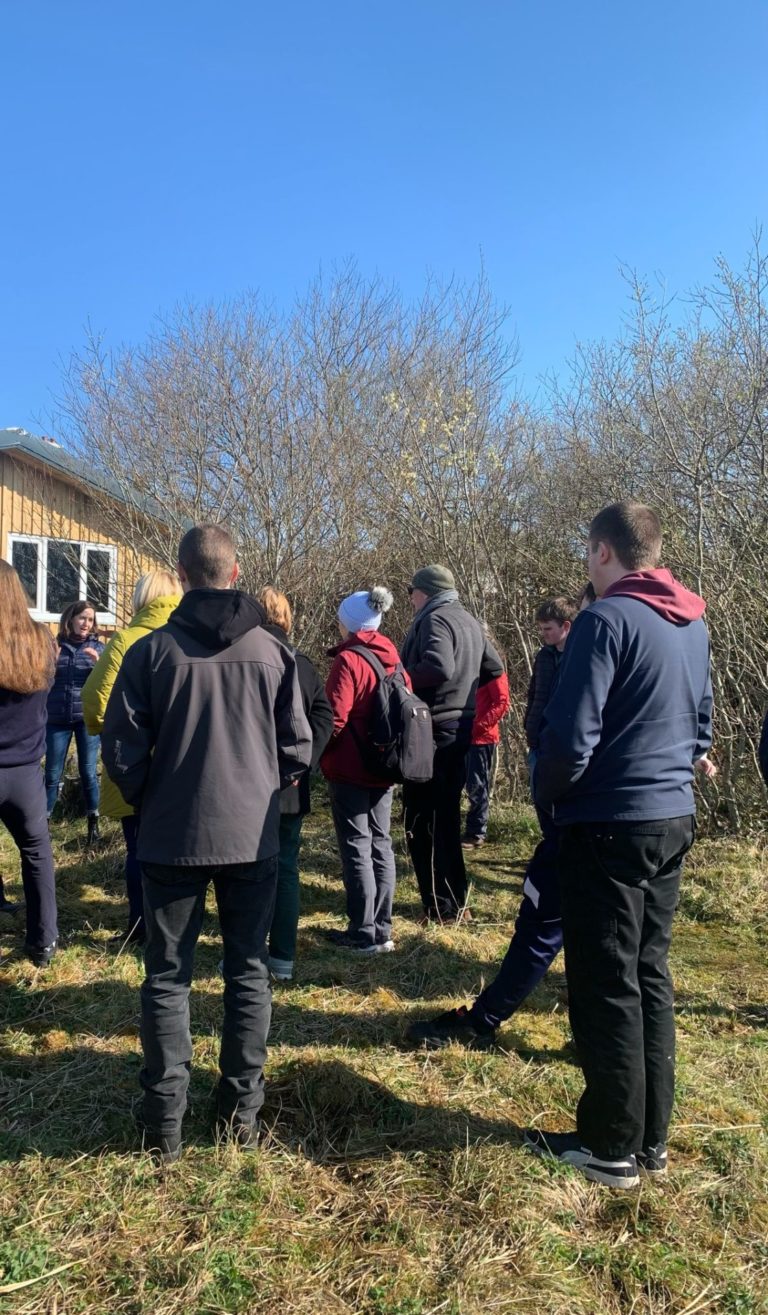
Participants listening to Sheila
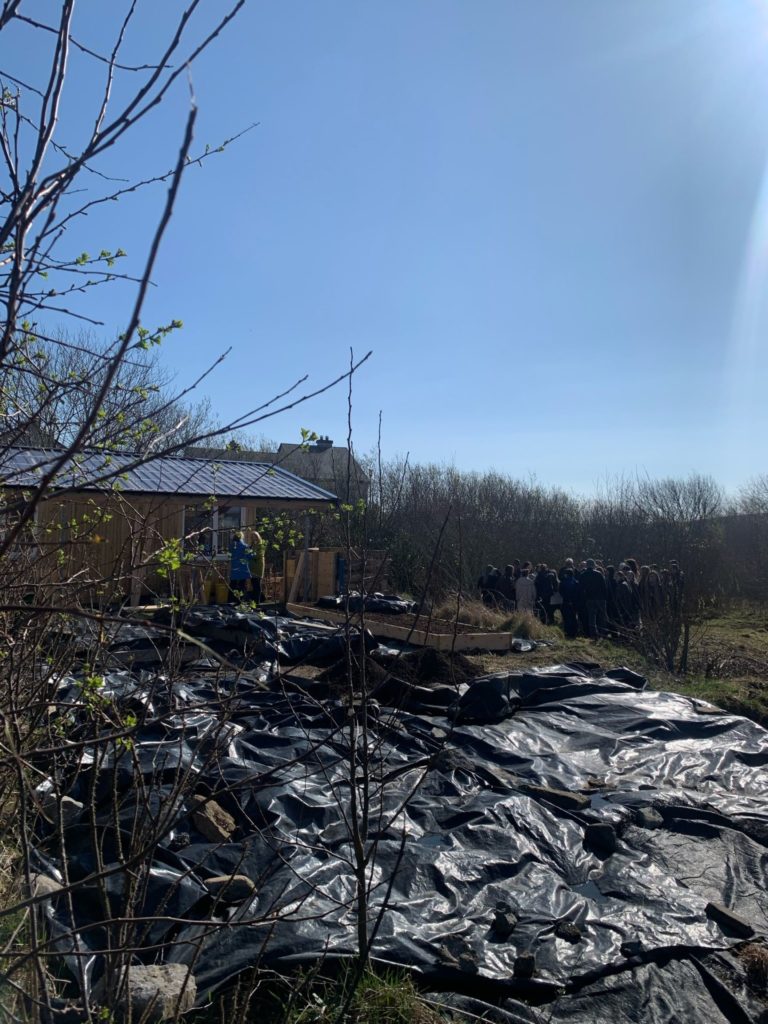
Participants listening to a talk in the community garden
During Pat’s session he focused on the different crops that can be found in the forest garden, and how the community has worked to develop the garden. Some of the boys asked how their dads could grow some of these crops on their farms. They commented on how they were taking part in the Teagasc, (the Food and Development Agency) ACRES scheme where farmers are incentivised to sow hedgerows, native trees or orchards on their farms.
Participants enjoyed the workshop and were interested in how they can “grow more fruit and veg of my own and look after biodiversity”. Another commented on the unexpected outcome of learning about bats.
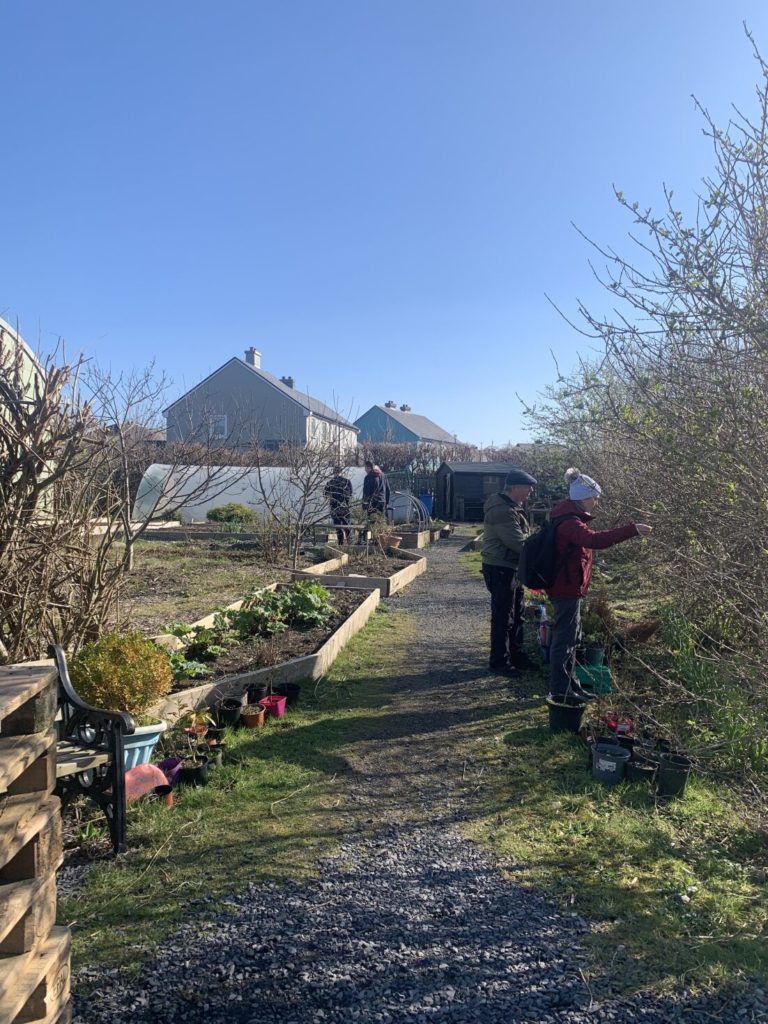
Pat and participant tasting some hawthorn leaves, or “bread and cheese”!
“I’d like to grow more fruit and veg of my own and to look after biodiversity!”
The following evening a Sunflower Planting Competition was held at Father Angelus Park for residents to meet to talk about the Food Forest and have a chance at winning a prize to spend at Homeland the garden centre.
